Introduction
Do Rabbits eat mums? Let’s find out.
The aroma of fresh blooms fills the air, and you can’t help but feel a sense of joy and accomplishment. But wait!
Oh no, it can’t be! Those sneaky rabbits have struck again, munching away on your beloved mums.
But fear not, my green-thumbed friends, for I have embarked on a mission to unravel the secrets of protecting our precious mums from those fluffy but mischievous critters. Get ready to dive deep into the world of flower defense and learn how to outsmart those rascally rabbits.
In this enchanting journey, we will explore the fascinating behavior of rabbits and their insatiable appetite for tender blooms. We’ll discover why these adorable creatures can’t resist the allure of mums and how their voracious snacking can affect the growth and beauty of our beloved flowers.
From scent-based deterrents that make rabbits turn up their cute little noses, to the art of creating a bunny-disapproving habitat, we’ll uncover a plethora of techniques that will make those rascally rabbits think twice before chomping on our precious flowers. We’ll even look into the mysterious world of rabbit breeds and explore their varying levels of interest in their mums.
So put on your gardening gloves, grab your watering can, and get ready to wage war against those ravenous rascals. With a sprinkle of creativity and a touch of strategic thinking, we’ll reclaim our mums and enjoy the beauty of our gardens without worry.
Get ready, my friends, to protect our mums and reclaim our gardens!
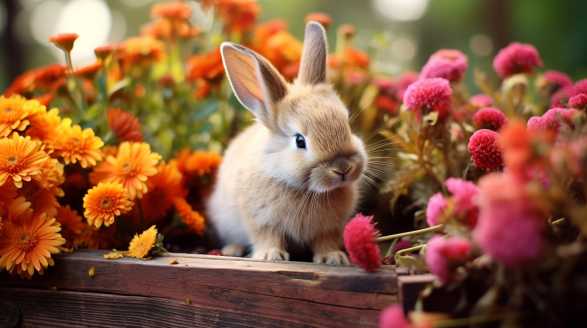
Key Takeaways
- Rabbits have an insatiable appetite for mums and are attracted to their scent and visual appeal.
- Rabbits may eat mums even if they are not hungry, as they are drawn to the taste, scent, and environmental enrichment that mums provide.
- Different rabbit breeds may have varying levels of interest in their mums based on breed characteristics, individual personality, socialization, and past experiences.
- Signs of rabbit damage on mums include chewed and nipped stems, missing foliage, clipped flowers, and distinctive droppings.
- Effective strategies to prevent rabbit damage include installing fencing, using repellents and deterrents, creating a habitat that rabbits dislike, and resorting to scare tactics.
- Rabbit damage can stunt the growth of mums, weaken the plant, and destroy flower buds.
- Protecting mums from rabbit damage involves identifying and addressing signs of damage, implementing protective measures like fencing and repellents, and creating a bunny-resistant garden environment.
Top Tips for Preventing Rabbits from Devouring Your Beautiful Mums
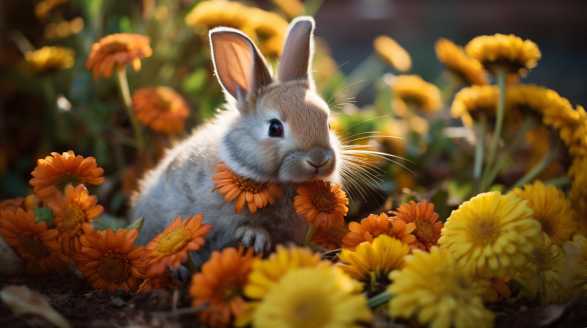
Understanding the Bunny Munchies
Rabbits have an insatiable appetite for tender plants, and your mums might look like an irresistible buffet to them. Before we look into the preventive measures, let’s understand a few key principles about rabbits and their behavior:
- Rabbits are most active during the twilight hours of dawn and dusk.
- They are attracted to areas with dense vegetation where they can hide and munch in peace.
- Rabbits are herbivores and have a particular fondness for young and tender plant growth.
- They have a keen sense of smell and will investigate any enticing aromas within their reach.
- Rabbits can jump surprisingly high, so don’t underestimate their athleticism!
Effective Rabbit Repellents
- Netting and Fencing: Create a physical barrier around your mums using a combination of netting and fencing. Make sure the mesh size is small enough to prevent rabbits from squeezing through. A fence height of at least 2 feet will discourage most rabbits from attempting to jump over.
- Scare Tactics: Install motion-activated devices such as sprinklers, wind chimes, or even a well-placed scarecrow near your mums. These sudden and unexpected movements or noises will startle and deter rabbits from approaching your flowers.
- Repellent Sprays: Certain scents and tastes repel rabbits. Commercial rabbit repellent sprays are available, usually containing ingredients such as garlic, cinnamon, or pepper. Apply the spray directly onto your mums and reapply after rain or every few weeks to maintain its effectiveness.
Natural Barriers and Deterrents
- Marigolds: Planting marigolds in and around your mum beds can help deter rabbits. These vibrant flowers produce a pungent aroma that rabbits find unappealing, acting as a natural defense.
- Thorny Plants: Rabbits steer clear of plants with thorns or prickly leaves. Consider adding thorny shrubs like roses, holly, or barberry near your mums to create a protective barrier.
- Onions and Garlic: Rabbits dislike the strong smell of onions and garlic. Planting these pungent bulbs around your mums can help deter rabbits from getting too close.
- Predator Urine: Yes, it may sound strange, but the scent of a predator can make rabbits think twice before hopping into your garden. Predator urine, such as that from foxes or coyotes, is available in liquid or granule form. Just strategically place it near your mums to keep rabbits on their toes.
Additional Strategies to Foil the Furry Intruders
- Keep the Garden Tidy: Remove any unnecessary vegetation, fallen leaves, or debris that might attract rabbits to your garden. This reduces their hiding spots and minimizes their interest.
- Mowing and Trimming: Keep the grass around your mum beds neatly trimmed. Shorter grass allows you to spot any rabbits attempting to approach your flowers more easily.
- Raised Beds and Containers: Planting your mums in raised beds or containers adds an extra obstacle for rabbits, making it more difficult for them to access your flowers.
- Vibrant Distractions: Surround your mums with other brightly colored, rabbit-resistant flowers such as lavender, daffodils, or petunias. This provides visual distraction and may divert the rabbits’ attention away from your mums.
Rabbits may be cute and fluffy, but their voracious appetite can quickly turn your beautiful mums into a feast. By implementing these top tips for rabbit prevention, you can protect your precious flowers and maintain the stunning beauty of your garden.
Are All Rabbit Breeds Equally Interested in Mums?
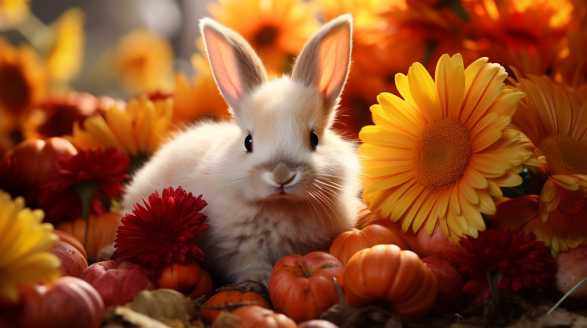
The Bond Between Mums and Bunnies
Rabbits are known for their lovable and gentle nature, but what about their connection with their mums? It’s essential to understand that the bond between a rabbit and its mother, known as a “dam,” is crucial in the early stages of a bunny’s life.
The Fascinating World of Rabbit Breeds
Before we look into the depths of rabbit intrigue, let’s explore the vast array of breeds that exist. From adorable Netherland Dwarfs to majestic Flemish Giants, each breed possesses its unique set of characteristics and temperament.
The Inquisitive Nature of Bunnies
Rabbits are naturally curious creatures. They love exploring their surroundings and interacting with anything that catches their attention.
Factors Influencing a Rabbit’s Interest in Their Mum
Not all rabbit breeds exhibit the same level of interest in their mums. Several factors can influence this intriguing phenomenon.
Breed Characteristics
Different breeds have varying levels of maternal instincts. Some rabbits, such as Rex or Mini Lops, are known to be more attentive and affectionate towards their offspring.
Individual Personality
Just like humans, rabbits possess unique personalities. While breed characteristics play a role, an individual rabbit’s temperament can greatly impact their curiosity towards their mum.
Socialization
Rabbits that have been well-socialized from an early age tend to exhibit more interest in their mums. Socialization helps foster a stronger bond between a rabbit and its mother, resulting in greater curiosity and affection towards her.
Past Experiences
Past experiences can also shape a rabbit’s interest in their mum. If a bunny had a positive and nurturing environment during their early development, they are more likely to maintain a keen interest in their mum throughout their lives.
Tales of Rabbit Breeds
Now let’s take a closer look at some popular rabbit breeds and how they express their interest in their mums:
1. Netherland Dwarf
These pint-sized bunnies are known for their energetic and curious nature. Netherland Dwarfs typically display a high level of interest in their mums, often seeking comfort and playfulness in their presence.
2. Flemish Giant
As the largest breed of domestic rabbits, Flemish Giants may seem intimidating, but their tender-hearted nature is undeniable. Though less inclined towards their mums compared to smaller breeds, these gentle giants still display a notable level of interest, especially during their early development stage.
3. Dutch
Dutch rabbits are known for their striking coat patterns and outgoing personalities. They are generally highly interested in their mums and thrive in a nurturing environment.
4. Mini Lop
Mini Lops are tiny bundles of joy and affection. These adorable bunnies exhibit a strong interest in their mums, seeking warmth and companionship in their presence.
5. Californian
Though Californian rabbits are not notorious for their obsession with their mums, they still possess a level of curiosity towards their maternal figure. These intelligent and independent rabbits value their personal space while occasionally seeking comfort from their dam.
The Rabbit’s Tale Continues
In this whimsical journey through the world of rabbits, I’ve discovered that not all breeds are equally interested in their mums. The intricate balance of breed characteristics, individual personalities, socialization, and past experiences plays a significant role in determining a rabbit’s curiosity towards their dam.
It’s essential to remember that each rabbit is unique, even within a specific breed, and their level of interest in their mum may vary. So, the mystery remains, teasing us with its perplexing nature as we continue to observe and learn more about these delightful creatures.
Exploring the Myth: Do Rabbits Eat Mums Only When Hungry?
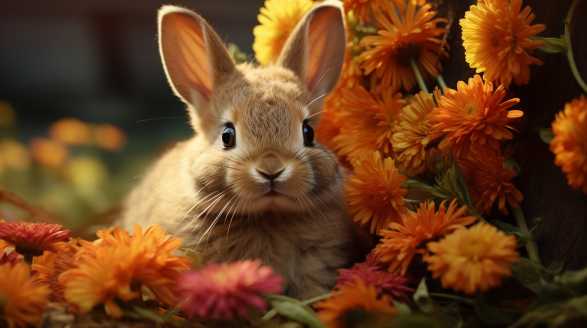
Have you ever wondered why rabbits seem to have a peculiar fondness for munching on mums? I, for one, couldn’t help but be captivated by this mystery.
So, grab a carrot and join me on this adventurous exploration of whether rabbits only feast on mums when their bellies rumble!
Identifying the Culprits
Before diving into the heart of the matter, we should first identify who we’re dealing with – the bunnies! Rabbits are herbivorous animals, which means their diet primarily consists of plant-based foods.
The Tempting Aroma of Mums
The Alluring Smell
It turns out that rabbits possess an extraordinary sense of smell, and when it comes to mums, their noses go into overdrive. Mums emit a fragrance that resonates with rabbits, attracting them like bees to honey.
The Visual Appeal
Rabbits are no strangers to visual splendor either. Mums’ vibrant colors and distinctive shapes make them a tempting treat for these furry herbivores.
Nutritional Value – A Controversial Aspect
Despite their affinity for mums, rabbits’ actual nutritional requirements may not be fully satisfied by these delightful flowers alone. Let’s break down the nutritional value of both mums and the foods rabbits typically consume.
Mum’s Side of the Story
Mums contain certain nutrients, including vitamins and minerals, that can indeed provide some nutritional value to rabbits. However, these flowers are lacking in important components such as fiber, which is essential for maintaining a healthy digestive system in rabbits.
Rabbit’s Nutritional Needs
Rabbits require a diet rich in hay, leafy greens, vegetables, and controlled amounts of pellets to ensure they receive adequate fiber, as well as other necessary nutrients. While mums can be a tasty addition to their diet, they should always be provided in moderation to avoid any potential digestive issues.
Why Do Rabbits Graze on Mums?
The Rumbling Tummy Conundrum
Rabbits are known for their voracious appetites, often grazing for long periods throughout the day. However, even when their bellies are full, they may still indulge in mums.
So, what are the other factors that prompt these furry creatures to nibble on mums?
Environmental Enrichment and Boredom
Rabbits are naturally curious and intelligent creatures, constantly seeking mental stimulation. Munching on mums can provide them with a form of environmental enrichment, adding excitement to their daily routine.
Social Interaction and Communication
Rabbits are social animals that thrive on companionship and communication. When living in groups, they may engage in a behavior called “scent-marking,” which involves rubbing their chins on various objects to leave their scent behind.
Ah, the enigmatic world of rabbits and their love for mums – truly a captivating phenomenon! While rabbits certainly find these flowers visually appealing and are drawn to their enticing scent, their instinctive behavior goes beyond mere hunger.
So, next time you spot a rabbit nibbling away at the mums in your garden, remember that they aren’t just ravenous little herbivores. They’re clever, curious, and always up to something unexpected.
Now, if you’ll excuse me, I’ll continue my adventures into the rabbit realm, seeking to unravel more peculiar mysteries along the way! Until then, happy bunny watching!
Rabbits Eating Patterns: Why They Prefer Mums Over Other Plants
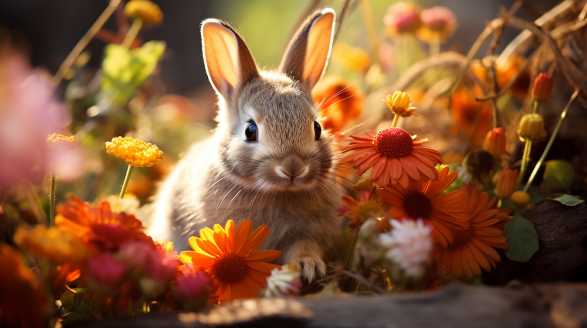
Well, well, well. Let’s talk about rabbits, shall we?
Prepare to have your mind blown!
The Magic of Mums
Mums, also known as Chrysanthemums, are not only a delight to the eyes but also a favorite treat for our hopping friends. Their vibrant blooms and aromatic scent seem to attract rabbits like moths to a flame.
Let’s unravel the mystery.
1. A Tasty Snack
Rabbits, like many herbivorous creatures, have a particular taste for plants with high nutritional value. Mums happen to be packed with essential nutrients, such as fiber, vitamins, and minerals.
2. The Aroma of Temptation
Ah, the alluring scent of mums! It’s no secret that rabbits have a heightened sense of smell compared to us mere humans.
Just like the aroma of freshly brewed coffee can draw us in, the scent of mums proves to be simply irresistible to rabbits.
3. A Floral Paradise
Picture a beautiful garden filled with vibrant mums. For rabbits, it’s like stumbling upon a playground of deliciousness.
It’s as if they have their own secret hotspot for buffet-style dining!
4. Something Beyond Taste
While the nutritional value and enticing aroma play major roles in attracting rabbits to mums, there might be something more to this eating pattern. It could be an instinctual behavior that has been passed down through generations.
After all, nature has a way of surprising us at every turn!
Tips for Bunny-Friendly Gardens
Now that we understand why rabbits have an affinity for mums, let’s explore how we can create a bunny-friendly garden while still protecting our beloved plants.
1. Plant Alternatives
If you’re concerned about your mums falling victim to the rabbit appetite, consider planting other attractive options. Opt for plants such as lavender, marigolds, or sunflowers, which rabbits are less likely to nibble on.
2. Protective Measures
Sometimes, a little defense goes a long way. To shield your mums and other vulnerable plants, you can use physical barriers such as fences, mesh, or even chicken wire.
3. Distractions and Decoys
Rabbits can be easily tempted away from their favorite treats when there is something even more appealing on the menu. Consider planting extra treats or snacks for them in a separate area of your garden.
By providing alternative food sources, you can divert their attention and preserve your precious mums.
Closing Thoughts
In the intricate world of rabbit eating patterns, mums hold a special place of honor. From their irresistible taste and captivating scent to the mysterious allure they hold for rabbits, these flowers embody a true delicacy in the eyes (and mouths) of our furry friends.
Happy gardening!
How to Identify Rabbit Damage on Mums: Signs and Solutions
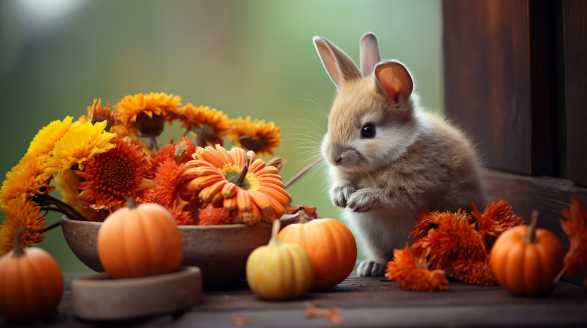
Signs of Rabbit Damage
Chewed and Nipped Stems
One of the clearest indications of rabbit damage on mums is the presence of chewed or nipped stems. These mischievous critters have a particular fondness for the tender stems of young plants.
If you notice stems that have been severed or gnawed upon, it is highly likely that rabbits are the guilty parties.
Missing Foliage
Rabbits have voracious appetites and will gladly feast on the leaves of your mums. If you observe missing foliage from the lower parts of the plant, leaving only barren stems, it is a strong indication of rabbit activity.
Clipped Flowers
If you discover that your mums have had their flowers clipped or nibbled, rabbits are most certainly the culprits. While they may not completely devour the blossoms, they often take small bites, leaving a messy, half-eaten display.
Distinctive Droppings
Rabbits leave behind distinctive droppings, and a careful examination of your garden can help confirm their presence. These droppings resemble small, round pellets, similar to those of a deer.
Effective Solutions
Fencing
One of the most effective solutions to protect your mums from rabbit damage is to install a fence around your garden. This physical barrier will deter rabbits from accessing your plants.
Make sure the fence is sunk into the ground to prevent rabbits from burrowing underneath it.
Natural Deterrents
A range of natural substances can act as deterrents to keep rabbits away from your mums. Consider spreading coffee grounds, cayenne pepper, or garlic powder around the base of your plants.
You can also try planting odoriferous herbs like rosemary, sage, or lavender as these scents tend to keep rabbits at bay.
Repellents
If natural deterrents alone are not keeping the rabbits at bay, you may need to resort to commercial repellents. These products are specifically designed to discourage rabbit activity and can be found at your local garden center.
Remember to reapply after rain or watering as repellents can be washed away.
Scare Tactics
Rabbits are skittish creatures, and scare tactics can help deter them from your garden. Place scarecrows or realistic-looking plastic predators, such as owls or even rubber snakes, near your mums.
Trapping and Relocation
If all else fails, trapping and relocating rabbits may be necessary. Contact your local animal control or wildlife agency for guidance on proper trapping methods.
Relocating rabbits to a more suitable habitat away from your mums will help protect your plants while preserving the ecosystem.
Rabbit damage on mums can be disheartening for any gardener, but with the right knowledge and strategies, you can effectively protect your plants. By identifying the signs of rabbit activity, such as chewed stems, missing foliage, clipped flowers, and distinctive droppings, you can take swift action to implement solutions.
Remember, the key is to be proactive and persistent in your efforts to safeguard your beloved mums from rabbits.
The Impact of Rabbits Eating Mums on Flower Growth
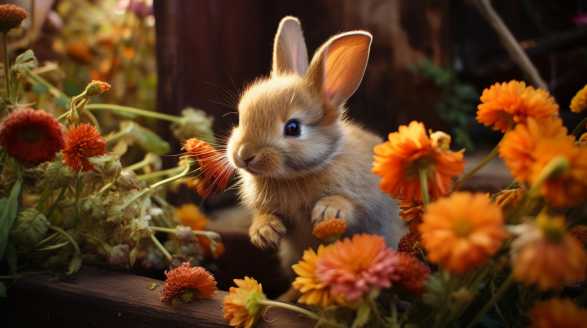
Understanding the Mums
Before we look into the impact of rabbits on mums, let’s take a moment to appreciate these stunning flowers. Mums, or chrysanthemums, are beloved for their vibrant and diverse colors, which range from whites and pinks to yellows and purples.
Mums have a reputation for being relatively low-maintenance and resilient. However, they are not impervious to the culinary preferences of hungry rabbits.
The Rabbit-Menace
Rabbits, those fluffy and innocent-looking creatures, have a notorious appetite for flowers, including mums. Once they set their sights on these delightful blooms, it can be challenging to deter them.
- Taste: Mums possess a tender texture and emanate a mildly sweet fragrance that appeals to rabbits’ palates. Their delicious taste can make mums a prime target for these little herbivores.
- Accessible Height: Compared to taller flowers like sunflowers or delphiniums, mums’ compact height makes them easily reachable for rabbits. Without the need to stretch, they can comfortably indulge in their floral feast.
The Ramifications of Rabbit Munching
When rabbits feast on mums, it not only damages the aesthetics of your garden but also affects the flowers’ overall health and growth. Let’s explore the impact of rabbit munching on mums:
Stunted Growth
Rabbits are known to graze indiscriminately, often leaving behind a half-eaten mum plant. This results in stunted growth, preventing the flower from reaching its full potential.
Weakening the Plant
Continuous nibbling by rabbits weakens the mum plants over time. As the rabbits feast on the fresh foliage, the plant’s ability to photosynthesize is compromised.
Consequently, a weakened plant may struggle to produce vibrant blooms or become more susceptible to diseases and pests.
Flower Bud Destruction
The flower buds of mums are delicate and vulnerable to rabbit damage. Rabbits often target the young buds, preventing the flowers from fully forming and blossoming.
Protecting Mums from Rabbit Munching
If you’ve experienced the frustration of rabbits feasting on your mums, worry not! There are several measures you can take to protect your flowers without causing harm to these adorable furry creatures.
1. Fencing
Installing a fence around your flower beds is an effective way to keep rabbits out. Opt for a fence with small gaps or use chicken wire to ensure the bunnies cannot squeeze through.
2. Repellents
Scent-based repellents can deter rabbits, as they find certain odors unpleasant. Products containing predator urine or blood meal can create a barrier that discourages rabbits from approaching your mums.
3. Raised Beds
Creating raised beds for your mums can make it more challenging for rabbits to reach them. Raised beds not only enhance visual appeal but also provide a physical barrier between the hungry herbivores and your cherished blooms.
4. Companion Planting
Strategically planting rabbit-resistant flowers around your mums can create a natural deterrent. Species like marigolds, daffodils, and lavender are known to repel rabbits.
Rabbits may be adorable, but when it comes to flower gardens, they can wreak havoc on the growth and aesthetics of your mums. By understanding the attraction rabbits have towards these beautiful blooms and implementing effective protective measures, you can enjoy thriving mums in your garden without surrendering them to the jaws of these cuddly creatures.
Best Practices for Deterring Rabbits from Munching on Your Mums
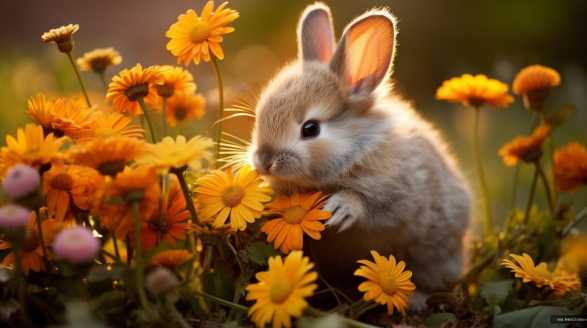
Understanding the Rabbit Munching Menace
Rabbits may look cute and harmless, but their appetite for mums can turn your garden into a feast for them. They have a knack for finding their way through your protective barriers, leaving you frustrated and mumless.
By following these best practices, you will ensure your mums stay intact, beautiful, and rabbit-free.
1. Plant Rabbit-Repelling Flowers
Using nature’s defense mechanisms can boost your chances of deterring rabbits. Consider planting mums alongside these naturally rabbit-repellent flowers:
- Marigolds
- Geraniums
- Daffodils
- Cosmos
- Alliums
These flora act as living repellents, emitting scents or toxins that rabbits detest. By using this strategic combination of flowers, you’ll create an inhospitable environment for our furry foes.
2. Use Barriers as Protective Shields
When it comes to preventing rabbits from gorging on your mums, nothing beats physical barriers. Implement these protective measures:
- Chicken wire fences: Surround your mums with a 2-3 feet tall fence buried about 6 inches deep to prevent rabbits from burrowing under.
- Plastic garden netting: Drape netting over your mums, securing it tightly to keep rabbits from sneaking in.
- Garden cloches: These transparent covers will shield your plants, while allowing sunlight and rain to reach them.
3. Scent-Based Deterrents
Rabbits despise certain smells, so harness this to your advantage. Here are some scents that send rabbits running for the hills:
- Garlic spray: Mix minced garlic with water and spray it around your mums. Rabbits will avoid the pungent odor.
- Hot pepper spray: Create a concoction using hot peppers and water, and spritz it around your plants to make them less appetizing.
- Predator urine: Don’t worry, it’s synthetic! Apply commercially available predator urine near your mums to create the illusion of a dangerous predator lurking, scaring rabbits away.
4. Create a Habitat that Rabbits Hate
Make your garden an uninviting space for rabbits by removing elements that attract them. Take these steps:
- Remove hiding spots: Trim overgrown shrubs, clear away debris piles, and eliminate tall grasses that make cozy homes for rabbits.
- Prevent easy access: Seal off crawl spaces, block gaps in fences, and ensure there are no convenient entry points.
- Avoid providing food and water sources: Remove fallen fruits, vegetables, and standing water that might tempt rabbits to settle in your garden.
5. Scare Tactics to the Rescue
Sometimes it’s necessary to resort to startling rabbits to deter them from wreaking havoc on your precious mums. Consider these effective scare tactics:
- Motion-activated sprinklers: Install these near your mums, and when triggered by movement, they’ll blast water, giving rabbits a good fright.
- Wind chimes or radios: Hang wind chimes or set up radios near your plants to create unexpected noises that rabbits dislike.
Alright, green thumbs, you now possess the knowledge and arsenal of strategies needed to protect your mums from those pesky rabbits. Remember to diversify your defense mechanisms, pairing natural deterrents, barriers, scents, and scare tactics for optimal results.
So go forth, garden warriors, and reclaim your mums from the jaws of these adorable yet pesky foes!
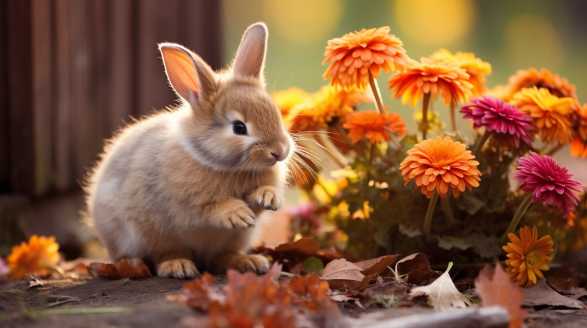
Conclusion
Wow, what a journey we’ve been on! From uncovering the mysterious behavior of rabbits to delving into the world of rabbit breeds and exploring their love for mums, we’ve learned so much.
But it doesn’t stop there, my fellow garden warriors! We’ve explored the signs of rabbit damage on mums, identifying chewed stems, missing foliage, clipped flowers, and those unmistakable droppings.
And speaking of protection, oh boy, have we uncovered some ingenious techniques! From physical barriers like fencing and netting, to scent-based deterrents such as garlic spray and predator urine, we have an arsenal of tools to keep those bunnies at bay.
And who can resist the power of scare tactics, with motion-activated sprinklers and wind chimes to startle those fluffy intruders away?
As we wrap up this whimsical adventure, let’s not forget the impact of rabbits on our mums. Their nibbling can stunt growth, weaken the plant, and destroy flower buds.
So, my friends, let’s step into our gardens with confidence, knowing we have the tools and strategies to protect our precious mums from those hungry hop-alongs. It’s time to unleash our creativity, perseverance, and love for gardening in this epic battle against the rascally rabbits.
Happy gardening, my fellow enthusiasts, and may your flowers bloom vibrantly and rabbit-free!
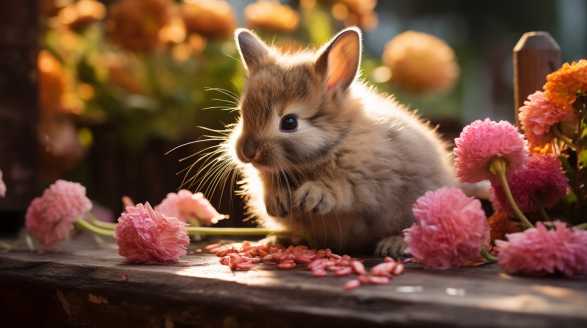
Frequently Asked Questions
Do rabbits eat mums?
Yes, rabbits may eat mums (Chrysanthemums) if given the opportunity. While they tend to prefer other plants first, rabbits may nibble on mums if they are hungry or if there are no other food sources available.
Are mums toxic to rabbits?
No, mums are not considered to be highly toxic to rabbits. However, excessive consumption of any plant material can cause digestive issues for rabbits, so it is best to limit their access to mums and provide them with a balanced diet.
How can I protect my mums from rabbits?
To protect your mums from rabbits, you can use various methods such as installing a fence around the area, using rabbit repellents or deterrents, or planting rabbit-resistant plants alongside your mums. Additionally, removing any potential hiding spots or sources of food near your mums can help discourage rabbits from coming close.
What are some rabbit-resistant plants that I can plant with mums?
Some rabbit-resistant plants that you can consider planting alongside your mums include marigolds, lavender, daffodils, rosemary, and snapdragons. These plants generally have scents or tastes that are unappealing to rabbits, which can help protect your mums.
Can mums be harmful to rabbits if ingested in large quantities?
While mums are not highly toxic to rabbits, consuming them in large quantities can still lead to digestive issues such as stomach upset or diarrhea. It is best to provide rabbits with a varied and balanced diet and avoid letting them consume excessive amounts of any plant material.
Are there any other precautions I should take to keep rabbits away from my mums?
In addition to using deterrents and planting rabbit-resistant plants, you can also consider creating a physical barrier around your mums by using wire mesh or netting. Regularly inspecting your garden for signs of rabbits and taking prompt action can also help prevent any potential damage to your mums.
Should I avoid planting mums altogether if I have a rabbit problem?
While rabbits may be attracted to mums, it doesn’t necessarily mean you should avoid planting them altogether. By implementing preventive measures, such as the ones mentioned above, you can still enjoy the beauty of mums in your garden while minimizing the risk of damage caused by rabbits.
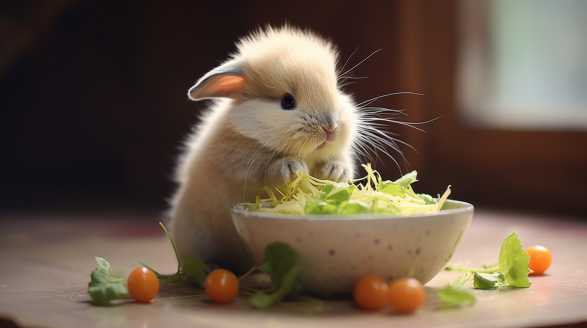
Can Rabbits Eat Bean Sprouts
Introduction Hey there, fellow rabbit lovers! If you’re a proud rabbit owner like me, you know how important it is to take care of your fluffy little friend. That’s why I’m so excited to dive into the topic of bean sprouts and their potential allergenic effects on rabbits. Bean sprouts, those crunchy and nutritious little […]
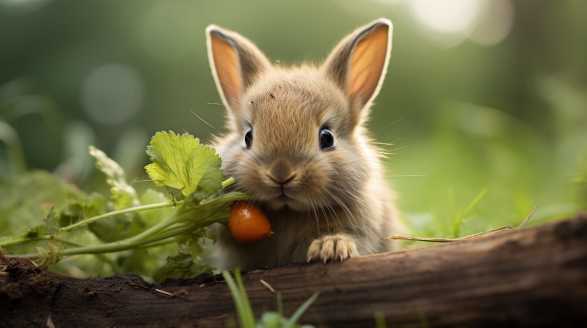
What Do Wild Rabbits Eat
Introduction What do wild rabbits eat? Let’s find out. Picture this: fluffy cottontails hopping through fields, munching on a diverse array of foods that go far beyond the carrots we often associate with rabbits. Oh no, these incredible creatures have daring taste buds that venture into unconventional territories. But here’s the thing: it’s not just […]
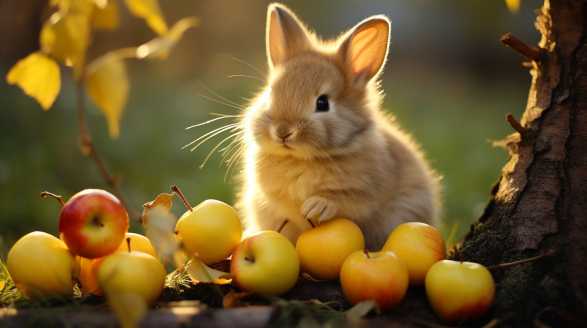
Can Rabbits Eat Pears
Introduction Can rabbits eat pears? Let’s find out. Picture this: you’re cuddled up with your adorable bunny companion, ready to embark on a quest to discover the ultimate treat that will make their taste buds tingle with delight. You’ve heard whispers of the luscious and nutritious pear, and now it’s time to unveil its secrets. […]
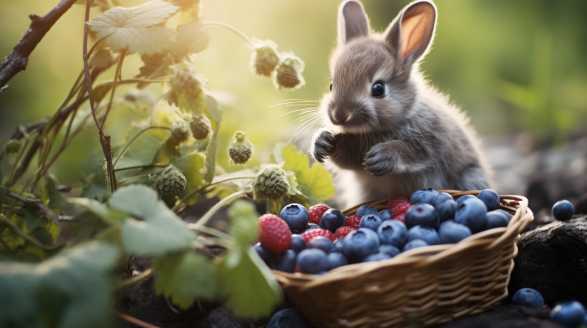
Can Rabbits Eat Blueberries
Introduction Can Rabbits eat blueberries? Let’s find out. It turns out that blueberries, those tiny balls of deliciousness, can be the secret ingredient to take your rabbit’s health and happiness to a whole new level. I know, I know – it sounds almost too good to be true! And that’s exactly what blueberries do! Blueberries […]
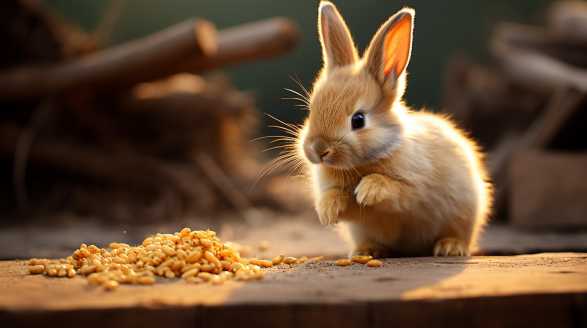
Can Rabbits Eat Chicken Feed
Introduction Can rabbits eat chicken feed? Let’s find out. Now, I know what you’re thinking. Chicken feed for rabbits? But trust me, this is a rabbit hole you won’t want to miss. We’ll debunk common myths, unravel the mysteries of rabbit digestion, and discover the potential benefits and risks of feeding our fluffy friends chicken […]
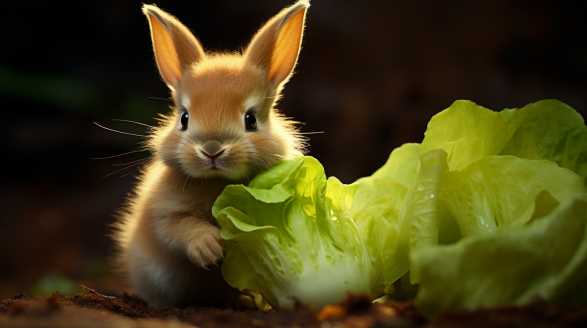
Can Rabbits Eat Butter Lettuce
Introduction Hey there, rabbit lovers! If you’re like me, you adore those adorable furry creatures and want nothing but the best for them. You may be wondering, why butter lettuce? Well, let me tell you, it’s not just for humans to enjoy in salads and sandwiches. we’re going to explore the nutritional benefits of butter […]
